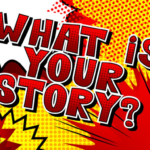Should a fundraiser raise funds by showing photos of people in need, in pain, or otherwise showing weakness? We’ve all seen photos of people (children, usually), often in the developing world, who show clear signs of malnutrition and/or disease: They may be emaciated and have facial expressions showing distress.
Everyone dislikes images like this. They are pictures that shouldn’t exist.
But they do exist, leaving the question: Is it proper to show “need-evident” images?
You may already have your answer to that question. Whether you do or not, it’s an important issue with ethical and financial consequences you shouldn’t ignore.
I’m going to give you my perspective and experience on this issue, and I hope this helps you make your best decision.
Because it’s your decision. And your decision flows from your organization’s values.
I’m focusing on images, because that’s what almost always brings up this issue. Words can do the same things as images, but images do it more.
Here are some of the reasons people have for avoiding those difficult need-evident images:
Dignity
This is the most common reason organizations decide not to use these types of images. Because by showing a moment of pain and weakness, they undermine the dignity of those in the photos.
I think most of us can think of photos of ourselves we’d rather not share around. Anything from high-school photos that show the ridiculous hair we had back then to photos taken at bad life moments.
My opinion: Everyone has a right not to share photos of themselves that they don’t want to share. Everyone. For any reason they choose. This applies also to verbal accounts about people. If someone doesn’t want their story told, their story should not be told. Period.
I think most people will agree with my opinion on this. It’s around the edges of this principle that things can get confusing. Here are the two extremes:
- Some organizations don’t get permission from photo subjects because, “it’s what you would see if you were there.” It’s a picture of a reality. They either don’t get people’s names, or they don’t publish them.
- Other organizations believe it’s their duty not to take those photos in the first place, because by their very nature, those images of a bad situation undermine the dignity of the people in that situation. They see this as part of the “duty of care” with those they serve.
I believe both of these approaches are flawed.
The first approach treats people as “subjects,” not as the human beings they are. Photos taken and displayed this way can desensitize viewers to the humanity of people who are our brothers and sisters. It might shake loose donations, but at a cost to the worldview and attitudes of those who see the photos.
The second approach has a different type of flaw. By taking it as a duty to protect other people’s dignity, it’s paternalistic. It assumes their dignity is fragile and requires us to protect them. I’ve met and talked with a lot of people in extreme need, and one thing nearly all have in common: deep wells of personal dignity. There’s nothing you can do to damage that. It’s innate and profound. They don’t need us deciding for them what touches their dignity. The only part of this approach that holds water (in my opinion) is what the images you share might do in the minds of your audience.
Fortunately, there’s a middle ground between those extremes that is both respectful and truthful. It hinges on permission. You must have permission to take someone’s photo (especially if you even remotely think you might use it), interview someone for their story, or get someone’s story second hand.
If they say no, you don’t do it.
In my experience, sometimes they say no. They often give their reasons for saying no, though they don’t owe us any explanation. “No” means you don’t use their image or story. The most common reason people say no is not because they want to protect their dignity, but it’s their privacy. Sometimes even their safety.
But more often, people are eager to share their story. It’s their story, their truth. They may say they hope it will help others understand the situation. They are often proud to share their image.
But you don’t know what their answer is until you ask them.
Sometimes getting permission gets complicated:
- When the person is a child, you should get permission from an appropriate adult. (But I think you should try to ask the child too.)
- When it’s not possible to get permission because they’re unconscious or otherwise don’t have the capacity to give permission. (That’s lack of permission in my book.)
- You might be in a chaotic situation where the permission conversation isn’t possible to have. Or there’s a language barrier you can’t cross. (That’s also lack of permission, I believe.)
That’s how I navigate the space between “grab any photo you can grab” and “don’t show anything at all difficult.”
You need to find your own way. You need to put your organization’s values to work in this area. If you want some outside input, here are three things I encourage you to take into account:
1. Your decision may cost you future revenue. I’ve seen many discussions on this issue start with a faulty premise: “Donors hate these pictures. If we stop using them, we’ll raise more money.” I can almost guarantee you that is not the case. If you don’t use difficult images and stories, you will raise less money. But here’s the thing: That’s what values are for. To help you make the right decisions, even if they cost you – because values are more important than money.
2. Make sure your decision is based on values — not taste or preference. Most of us don’t like difficult images. By itself, that’s not a good enough reason for a decision that might undermine your organization’s revenue. It sometimes takes clear introspection and mindfulness to know the difference.
3. Carefully define what is and is not okay, and put it in writing. This is a decision that should be as un-fuzzy as possible. Chances are, your final call will be somewhere between “show everything, no matter how rough” and “don’t show anything that is at all rough.” Do your best to draw the line where it should be and publish it internally so there is as little ambiguity as possible.
If you haven’t yet done it, I encourage you to have an open-eyed discussion on this. Really look within and outside and come to the decision that is solidly based on your values.
That’s how you make a good decision on a difficult subject.
Want great feedback from other fundraisers on the difficult subject you face? Join The Fundraisingology Lab by Moceanic. You’ll get the tools, the information, and the supporting community that will take you to new places in your fundraising career. Join the waiting list now and you’ll be the first to hear when the doors open again!
Related Blog Posts:










